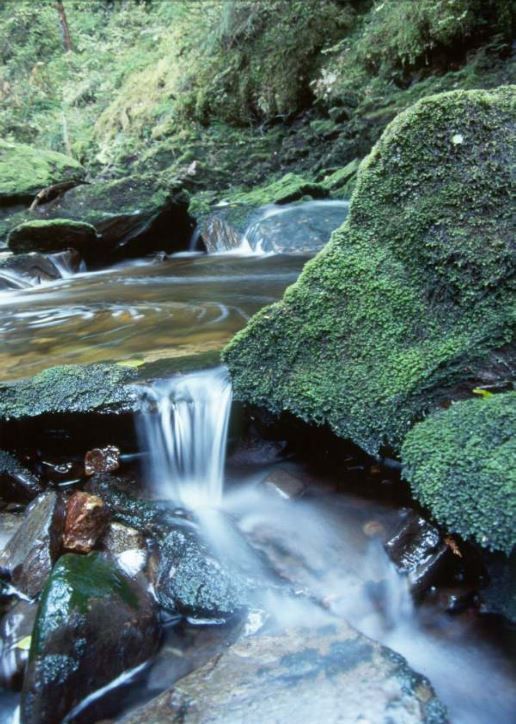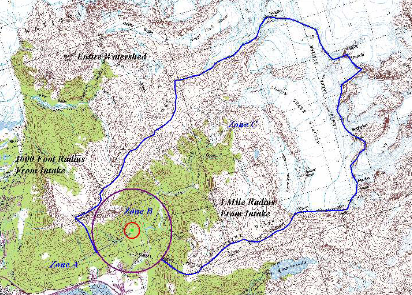Source Water Assessments
Frequently Asked Questions
What is a Source Water Assessment?
A Source Water Assessment is a study and report, unique to each water system, which provides basic information about the area that provides water to your drinking water source.
What Will My Assessment Tell Me?
- Where My Drinking Water Comes From
- Source Water Assessments identify the area of land that most directly contributes the raw (untreated) water used for drinking water.
- What Could Pose a Threat to My Drinking Water Quality
- Source Water Assessments identify the major potential and existing sources of contamination to drinking water supplies. This information is used to determine how vulnerable the water system is to contamination.

Is This Information Available?
The results of an assessment will be provided to public water system owners and/or operators, and the public to help communities plan for protection activities. Information about the assessment will be included in the yearly consumer confidence report you receive from, or completed by, your water utility.
Does My Water System Have A Source Water Assessment?
The Alaska Department of Environmental Conservation's Drinking Water Program completed assessments of its public water systems, as required under the federal Safe Drinking Water Act. Assessments were completed for every public water system, including schools, restaurants, and other public facilities that have wells, springs or surface water supplies. Assessments were not conducted for drinking water systems that have less than fifteen service connections or that regularly serve less than twenty-five individuals, since these are not considered public water systems under federal rules. Additionally, assessments may not have been completed for water systems that became active after 2006, and the Drinking Water Program no longer completes new reports or revises old reports.
Who Paid For These Assessments?
The majority of the cost for Source Water Assessments of public water systems was funded by the United States Environmental Protection Agency (EPA).
The source water assessment includes four major elements
- Delineating (or mapping) the source water assessment area (the area contributing water to the public water system)
- Conducting an inventory of potential and existing sources of contamination in the delineated protection area
- Determining the susceptibility of the water supply to those contaminant sources
- Providing the results of the susceptibility determinations to the water system owner and making them available to the public

Step 1: Delineate the Source Water Protection Area
For each ground water well, spring or surface water intake that supplies drinking water to a public water system, the land area that could contribute water and pollutants to the water supply must be delineated, or mapped, and a protection area defined. Significant potential and existing sources of contamination will then be identified in this protection area during Step 2 of the assessment process.
For ground water supplies, information about the flow direction underground water flow direction is used to delineate source water assessment and protection boundaries. This results in a map of land (surface) areas where, if pollutants are spilled or discharged on the surface, they could filter through the soil to the ground water and be drawn into a particular well, and in your drinking water.
For a community that uses surface water from a stream, river, lake, or reservoir, the land area in the watershed upstream of the intake is identified on the map. A watershed boundary is drawn using a topographic map, and includes the land areas where rain or melted snow flows over or through the watershed.

Step 2: Conduct an Inventory of Potential and Existing Sources of Contamination
Any existing or potential contaminant source(s) found within the designated protection area of your drinking water source(s) are identified and ranked by the risk they pose to your drinking water source(s). Some examples of the many different types of potential sources of contamination include landfills, underground or above-ground fuel storage tanks, residential or commercial septic systems, storm water runoff from streets, lawns, manure piles, farms that apply pesticides and fertilizers, and sludge disposal sites.
Step 3: Determine the Vulnerability of the Water Supply to Contamination
For the vulnerability analysis, the DEC combines the contaminant inventory results with other relevant information regarding the characteristics of each drinking water source to decide how likely a water supply is to becoming contaminated by identified potential and existing sources of contamination. This critical step makes the assessments useful for communities, since it provides information that local decision-makers may use to prioritize approaches for protecting the drinking water supply. The vulnerability of the drinking water source to potential contamination is ranked as very low, low, medium, high, or very high.
Step 4: Provide the Assessment Results to the Public Water System Owner and Make Them Available to the Public
After the Source Water Assessment is completed a report is compiled and provided to the owner or operator of the drinking water system. The report is also made available to the public through local libraries and a summary on DEC's web site. The report will help communities understand the potential and existing threats to their water supplies and identify priority needs for protecting the drinking water source from future contamination. The results of the assessments will also be included as a summary in the Consumer Confidence Reports that community water systems are required to prepare for their customers.
Using the Assessment
Communities can use information gathered through the assessment process to create a broad source water protection program. Community groups and local officials, working in cooperation with local and regional government and/or tribal agencies can plan how to manage the identified potential and existing contaminant sources, and prevent or minimize new contaminant threats in the source water assessment area.
Protect Your Source Water
- Recycle used oil
- Limit Pesticides
- Restrict Land Use
- Regulate
- Educate
Communities can use a number of different source water protection methods to prevent contamination of their drinking water supplies. One management option involves regulations, such as prohibiting or restricting land uses that may release contaminants in critical source water areas. Along with regulations, communities can hold local events and distribute information to educate and encourage citizens and businesses to recycle used oil, limit the use of pesticides, participate in watershed cleanup activities, and a multitude of other prevention activities. Another aspect of a source water protection program can be the purchase of land or creation of conservation easements to serve as a protection zone near the drinking water source. For an effective protection program, communities should consider using a variety of prevention measures to obtain maximum public participation and involvement.
Helpful Contacts
EPA is also available to help you. Visit their website at or call the Safe Drinking Water Hotline at 1-800-426-4791. You can also call the number on your water bill or contact your local DEC office for information on your water supplier.

 Indicates an external site.
Indicates an external site.